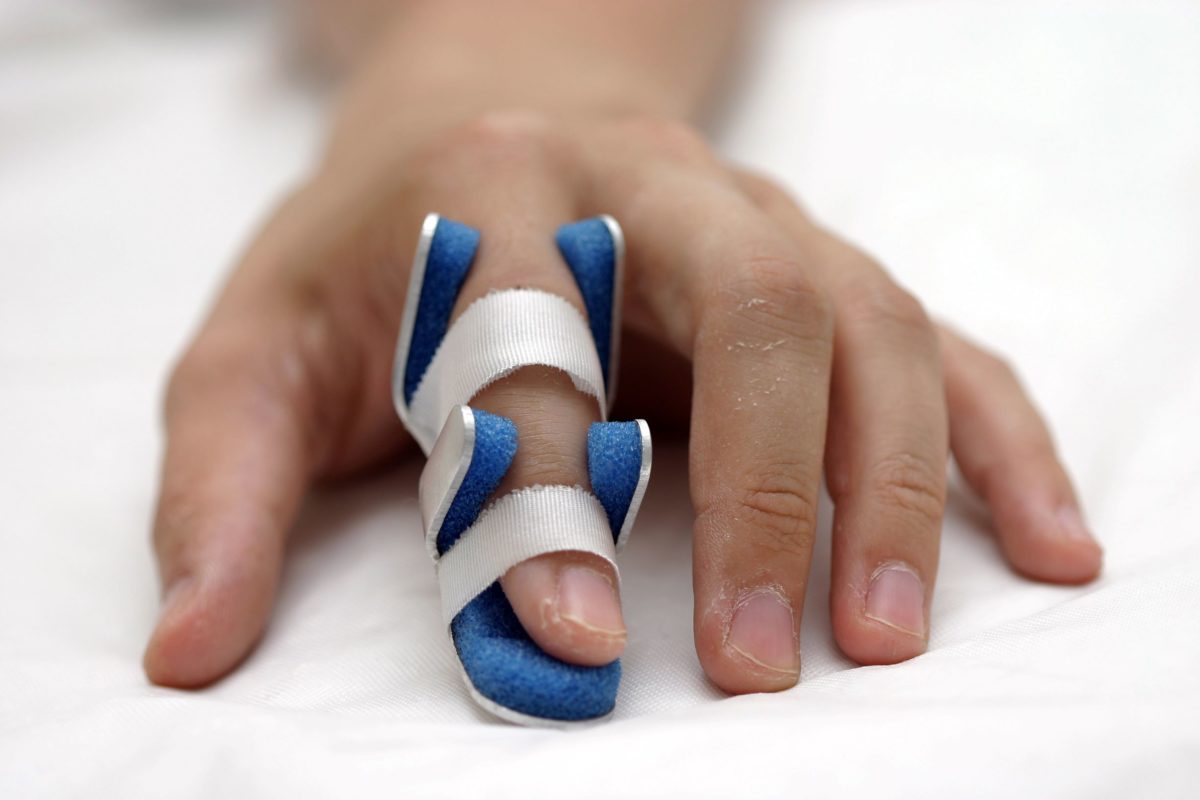Mallet finger is common in many individuals, especially because issues that occur regularly can lead to it. Slamming a finger into a door, injuring it with a baseball, falling, or any number of mishaps can all lead to this finger deformity.
What is Mallet Finger?
A mallet finger is a deformity of the finger caused when the tendon that straightens your finger (the extensor tendon) is damaged.
Such injuries are very common among athletes. When a ball or other object strikes the tip of the finger or thumb and forcibly bends it, the force tears the tendon that straightens out the finger. It may even pull away a piece of bone along with the tendon. As a result, the tip of the finger or thumb is no longer able to straighten. In fact, mallet finger is also known as baseball finger for this reason.
In a mallet finger, the fingertip droops. If the injury is recent, the finger may be painful, swollen, and bruised. These effects will be especially pronounced if there is an associated fracture. These symptoms may decrease over time, but mild discomfort in the finger and tendons may persist.
Occasionally, blood collects beneath the nail, and the nail can even become detached from beneath the skin fold at the base of the nail.
Mallet Finger Treatment
The majority of mallet finger injuries can be treated without surgery. Ice should be applied immediately, and the hand should be elevated with the fingers toward the ceiling. Medical attention should be sought within a week after injury, or the finger could heal improperly, leading to more permanent damage. It is especially important to seek immediate attention if there is blood beneath the nail or if the nail is detached. This may be a sign of a nail bed laceration or an open fracture.
Mallet fingers can also be treated with splints or casts that keep the fingertip straight until the tendon heals. This usually lasts about eight weeks. The good news is that the finger usually regains acceptable function and appearance with this treatment, although some inability to fully extend the finger may continue. Once the finger has healed, a hand surgeon or hand therapist will teach you exercises to regain motion in the fingertip.
Seeing a hand doctor for children with mallet finger is especially crucial. Because their fingers are still growing, a doctor can aim to ensure that the finger or fingers do not become stunted or deformed.
Surgery may be required to treat mallet finger if:
- The condition is severe
- There are large bone fragments
- Joints are misaligned.
- Using a split is not ideal or possible
- Other treatments are not successful.
Surgical treatments may include tightening the tendon, using tendon grafts, or fusing the joint straight. Pins, wires, or small screws may be used to aid healing.
If you have a new finger injury or have been coping with the symptoms of mallet finger for years, make an appointment to see our hand surgeon in West Bloomfield, Howell, Warren, or Macomb. Dr. Avery Arora can help determine the right treatment options for you.













